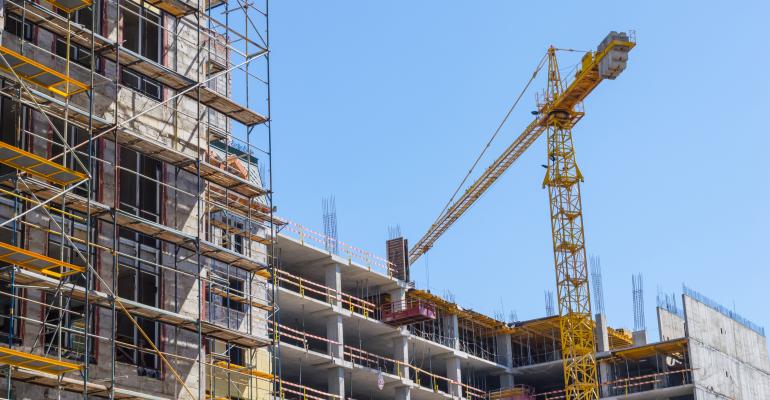Low interest rates are not enough to make up for the rising cost of construction on new apartment building projects.
“The drop in interest rates will not make a bad project look good,” says Matthew Swerdlow, director of capital services for Ariel Property Advisors, a real estate and advisory services firm based in New York City. “If it didn’t work with higher interest rates, it might not work with low.”
Apartment developers across the U.S. are struggling to pay for the rising cost of construction. Banks and debt funds are still eager to make construction loans at low interest rates, but these loans are not typically large enough to cover the higher cost of development. Many developers are now being forced to accept lower profits to make their deals work.
“There is still debt and equity capital available to develop apartment projects even though the rising cost of construction might make your deal—and your profit margins—a bit thinner,” says Bill Leffler, vice president in the multi-housing group based in the Atlanta office of real estate services firm CBRE.
Banks offer less money
Developers and lenders also have to worry about the possibility that the U.S. economy may slow down over the next year, cutting into demand for apartments. “People are starting to worry about how late in the real estate cycle it is. This is the longest cycle of growth that we have ever had,” says Leffler.
Many banks and debt funds are still willing to lend, but the loans are getting smaller compared to the cost of development. For example, two years ago, bank lenders often made construction loans that covered about 65 percent of the cost of development. A typical bank construction loan now often only covers 60 percent of the cost, experts say.
“It is late in the cycle for a lender to fund a full leverage loan,” says Leffler. “Lenders are not going to follow costs all the way up. Deals will get done, but developers may just need more equity.”
However, the number of lenders offering to finance apartment construction is about the same as it was a few years ago, despite economic worries and tough new banking regulations that came into effect a few years ago. These regulations, such as the international Basel III rules, limit the volume of risky real estate loans banks can hold on their balance sheets.
“Apartments outperformed so well in this cycle and the payoffs have been so consistent that we have not seen banks saying they have run out of their allocation for apartment lending in the last two years,” says Leffler. In addition, banks that hit their limit for construction lending tend to return eventually to making more loans as older loans are paid back. “The majority of retail banks and the majority of debt funds are still putting out construction debt.”
Bank lenders now often offer interest rates that float 225 to 250 basis points over LIBOR on recourse construction loans that cover up to 60 percent or, occasionally, 65 percent of the cost of the project. Debt funds typically charge higher interest rates, floating 500 basis points over LIBOR, for non-recourse loans that cover 70 to 75 percent of the cost of a project.
Interest rate spreads have not widened as LIBOR has shrunk in 2019, as lenders compete with each other to gain market share. “That 40-basis-point drop is a real tangible saving to developers,” says Swerdlow.
Construction costs are the biggest challenge
“Construction costs have been rising faster than rents have been rising,” says Leffler. “Overall, construction costs have been rising 10 percent to 12 percent a year.”
The costd of labor and materials like concrete and steel have risen the most steeply. That’s cutting into the profitability of new high-rise developments in the busiest markets. The price of lumber has spiked up in 2018 over worries of a trade war with Canada, but since then wood prices have moderated in 2019.
Rising costs make it less profitable—and riskier—to develop apartments. “Deals have been getting thinner and thinner in their profit margins,” says Leffler.
For a development deal to work, the total return on cost for the developer once the property has been leased up should be significantly higher than the cap rate that a similar, stabilized property would receive if sold.
“A typical return-on-cost used to be about 150 basis points above the cap rate. Now that spread is down to 125,” says Leffler. That means developers get less reward for the risk of development, and less space in their budget if costs rise unexpectedly.
Lower interest rates can help offset construction costs, but only to an extent. “The drop in interest rates will directly correlate with higher proceeds for the permanent take-out loan,” says Swerdlow. “Lower interest rates have not been enough to offset how much construction costs have been increasing.”





